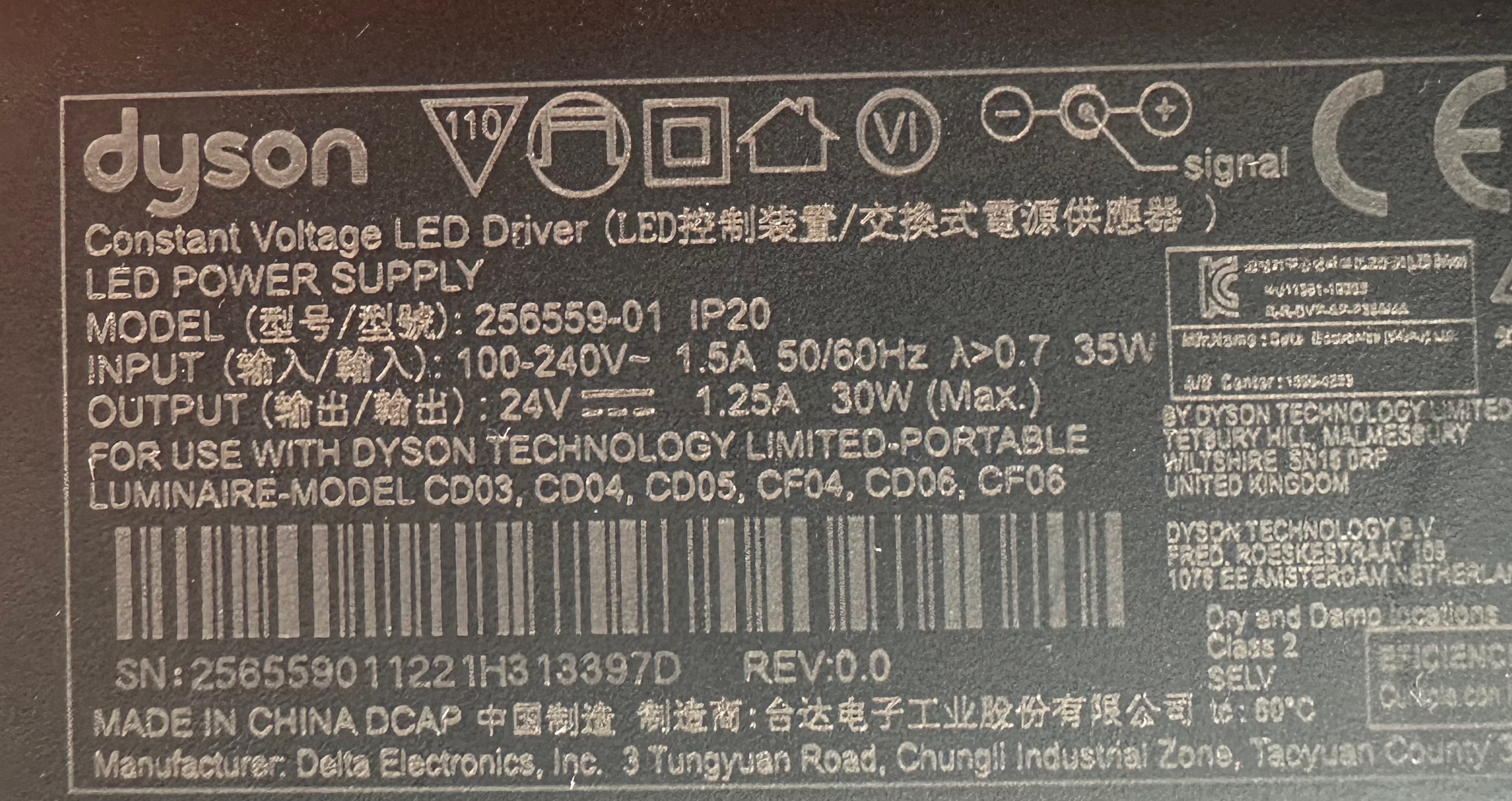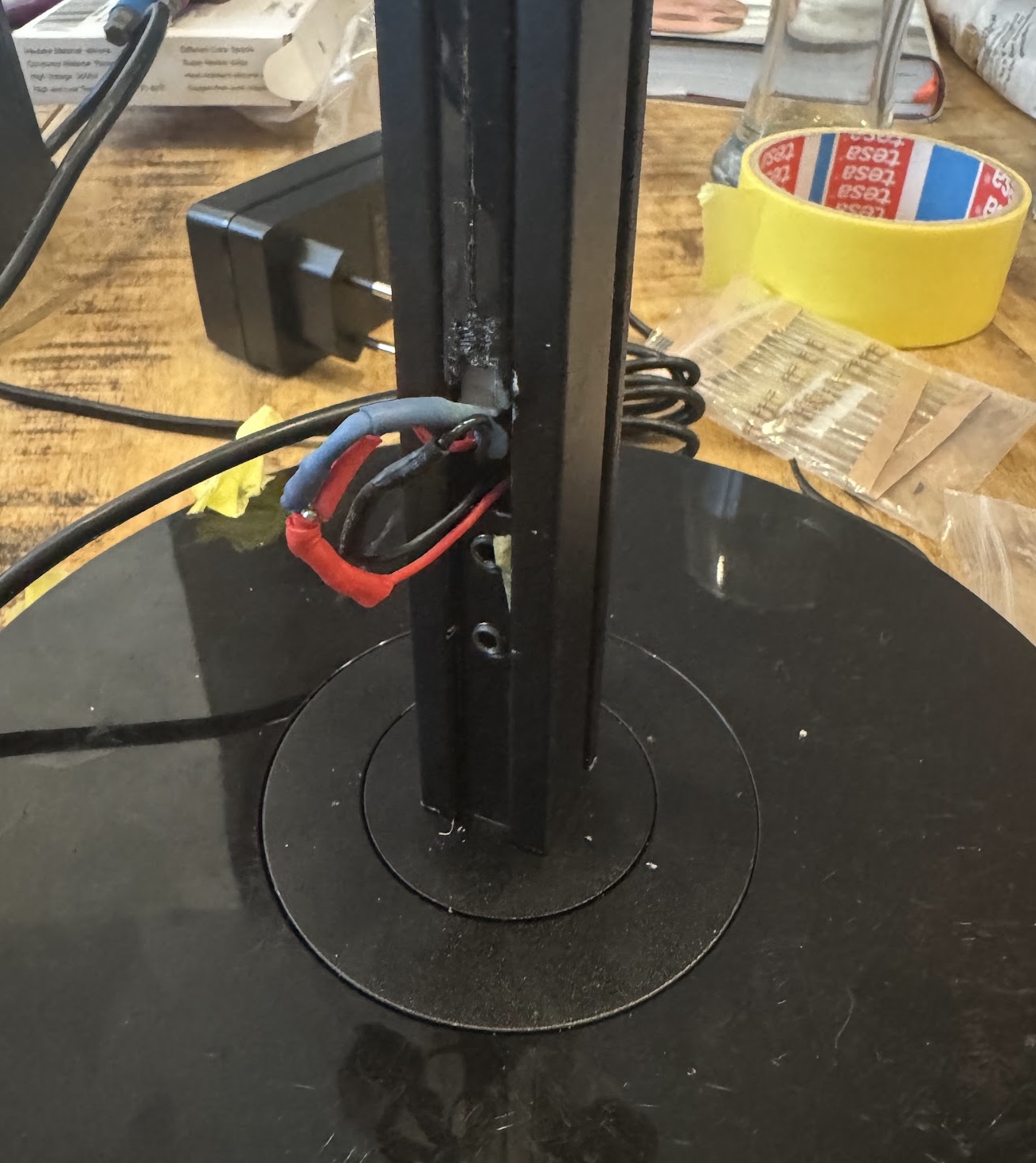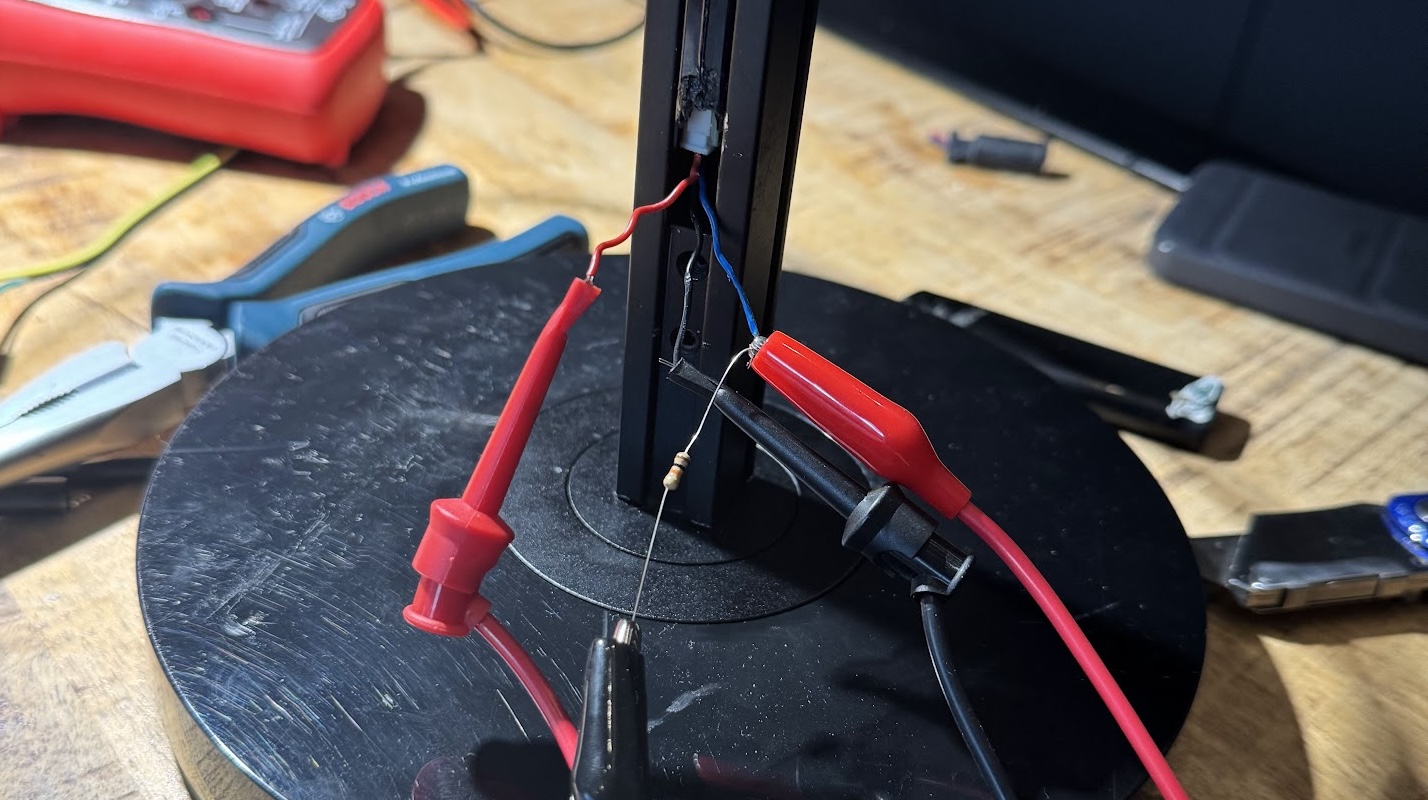Sometimes, the YouTube algorithm just hits the right nerve. By recommending me Steven Bennett’s DIYson project, it absolutely did.
Steven is building a DIY version of the Dyson Solarcycle — a fancy desk lamp that I find aesthetically pleasing. I’ve been following his project for the past year, but never quite committed to building one myself. That changed after I visited a friend’s office and saw the Dyson lamp in person. I knew I wanted one.
The ~€420 price tag was already a tough pill to swallow, but worse — it’s no longer available. The successor, the Solarcycle Morph just isn’t my thing.
There aren’t many used ones on eBay, but I managed to score one missing its power supply for a decent price and impulse bought it. The PSU itself is nothing special — just your typical 24V 1.25A DC unit.

It is, however, sold out in the Dyson shop and according to Reddit, it has been for a while — Dyson apparently can’t provide replacements anymore.
To make matters worse, the lamp uses a proprietary barrel connector with a center sense pin. I was initially worried that the PSU did something fancy, but after finding the excellent dyson-power-supply-hack write-up, I realized all I needed was the right plug—or to make my own.
I couldn’t find a matching plug, so I decided to dismantle the lamp. That turned out to be harder than expected. The flex cables inside simply carry 24V DC and ground. There’s a PCB in the base of the lamp’s leg that handles the barrel jack, the sense pin, and also powers the USB-C port.
Sadly, the PCB didn’t want to budge — trust me, I tried. In the process, I ended up snapping off about 4 cm of the bottom cover, which exposed a JST connector. That let me unplug the original barrel jack entirely.
I then hooked up the three exposed wires to a generic 24V 2A PSU I had lying around:
| Color | Connection |
|---|---|
| Red | +24V |
| Black | GND |
| Blue | via 10kOhm to +24V |

And that’s it! I now have a fully functional Lightcycle, and I really like the quality of light it gives off. That said, I’m glad I didn’t pay anywhere near full price—the light itself is strong, but the lamp feels a bit flimsy, and those flex PCBs don’t inspire long-term confidence. The poor repairability did the rest for me.
Honestly, I much prefer the DIYson’s PCB-based approach. Maybe I’ll build one of those someday.
